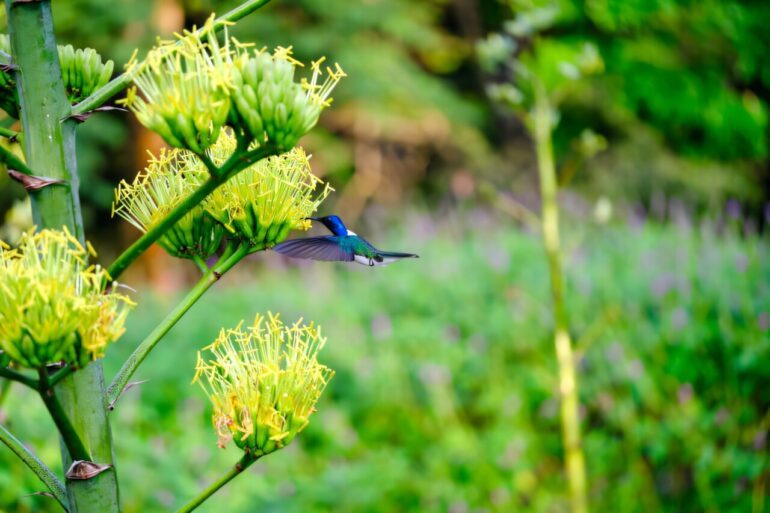Why do humans wear clothes? One reason is that changing outfits allows people to tailor their look in hopes of attracting or avoiding attention. New research led by the University of Washington found that hummingbirds may take a similar approach.
It’s been known for some time that some—but not all—female white-necked jacobin hummingbirds take on the brightly colored plumage worn by males. In a study published in Animal Behaviour, a team of researchers from the UW and Carnegie Mellon University has discovered the reason: They’re mimicking males. That trickery results in reduced aggression from other hummingbirds and increased access to nectar resources.
“This research takes a mental model we’ve been describing for a while in our papers and gives it a mathematical backbone,” said Jay Falk, an evolutionary biologist who led this research while working as a postdoctoral scholar in the UW biology department. “It can be easy to think of natural selection as a force that is constantly choosing one single optimum. But this model adds to our understanding of how diversity, especially diversity within sexes, can be a stable endgame.”
Relying on the principles of game theory and incorporating previously collected behavioral data, the researchers developed a model of hummingbird behavior to better understand how some birds choose their colors. The findings showed that “hybrid signals”—an equilibrium that can occur when signalers in a given situation may be dishonest—likely exist in nature.
“In these hummingbirds, females want to mimic males,” said Kevin Zollman, a co-author of the study and director of Carnegie Mellon’s Institute for Complex Social Dynamics. “If they all did that, then they would end up being disbelieved. So, they end up settling into an equilibrium where some of them ‘lie,’ and they are sometimes ‘believed.'”
This mimicry helps explain how female polymorphism—in which females of a species can take many forms—persists among white-necked jacobins and other hummingbird species.
“This model elegantly explains this puzzling female polymorphism in one species, but also offers a framework to study testable predictions of plumage differences, or lack thereof, between sexes across hummingbirds,” said Alejandro Rico-Guevara, a UW assistant professor of biology and co-author of the study.
“We can use this to understand signals beyond plumage coloration, like different behaviors or body parts, such as long tails or auditory signals, which would entail different costs for the signalers and different model outcomes.”
More information:
Jay J. Falk et al, Partial honesty in a hummingbird polymorphism provides evidence for a hybrid equilibrium, Animal Behaviour (2025). DOI: 10.1016/j.anbehav.2025.123104
Provided by
University of Washington
Citation:
Cloaked in color: Research finds some female hummingbirds evolve male plumage to dodge aggression (2025, March 20)



